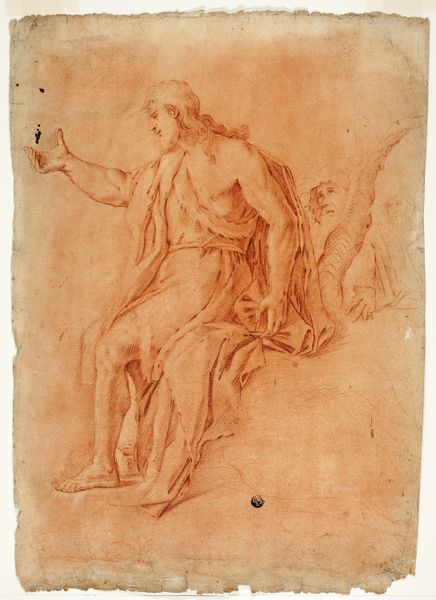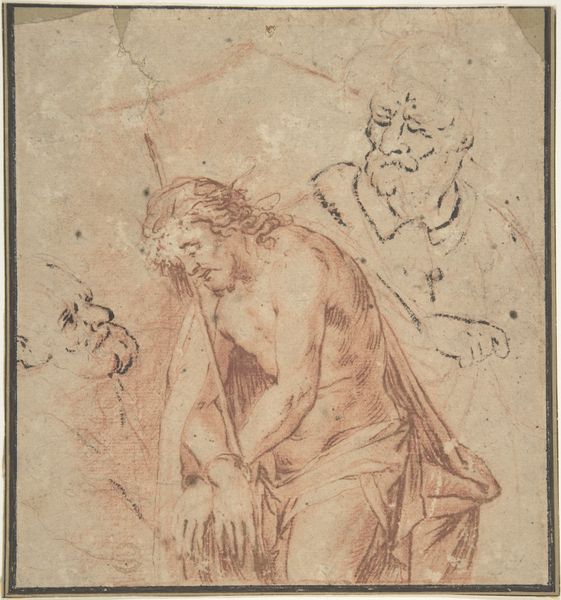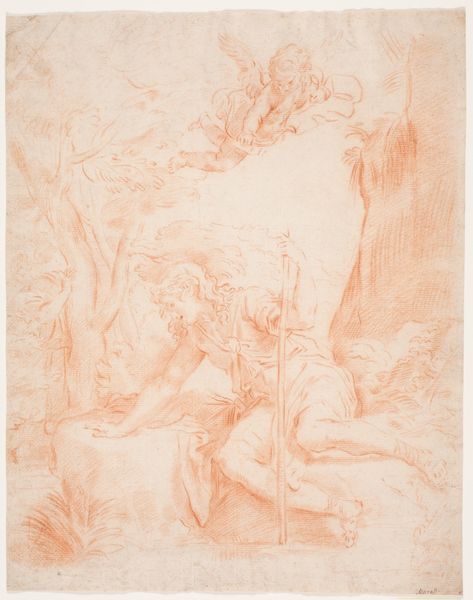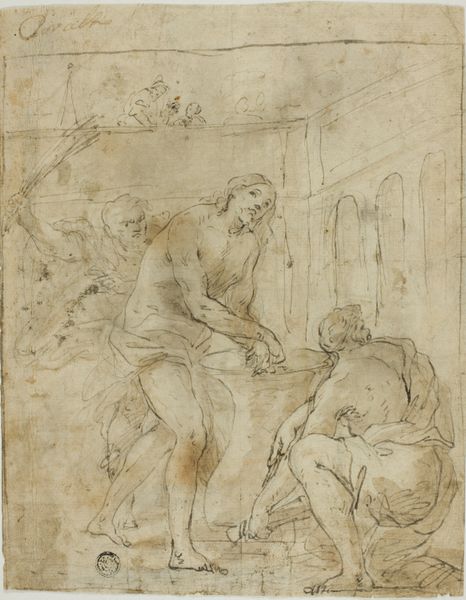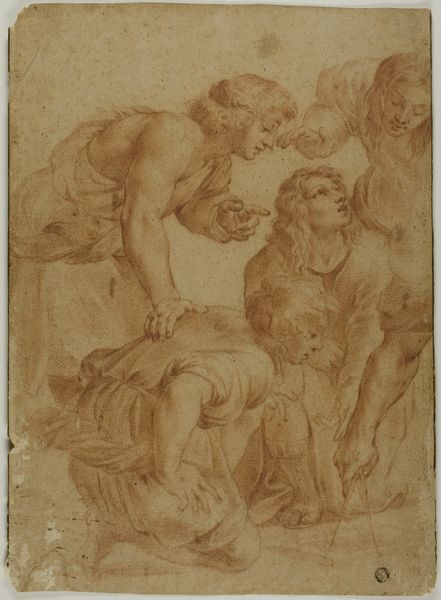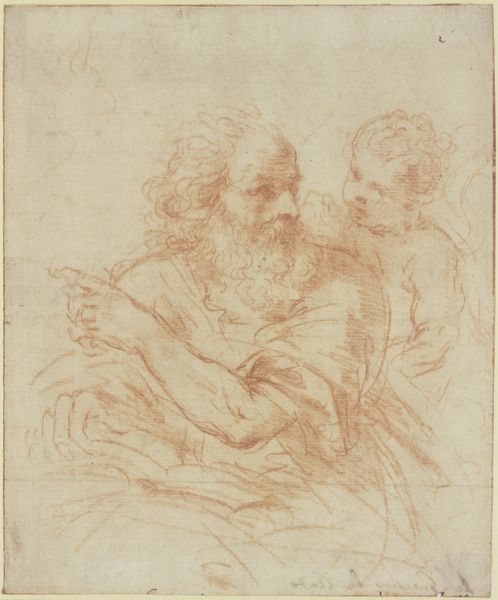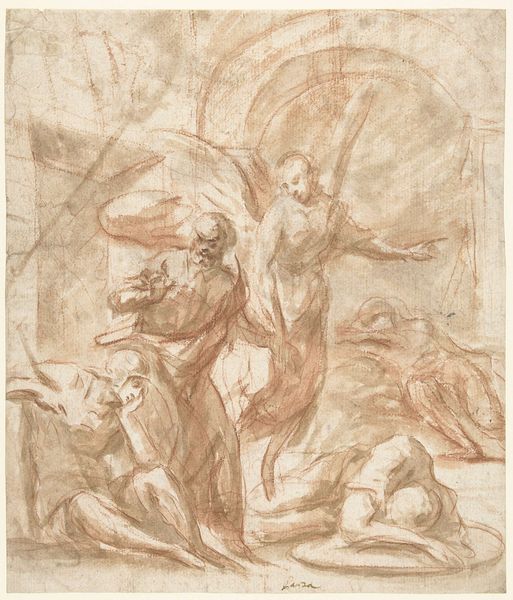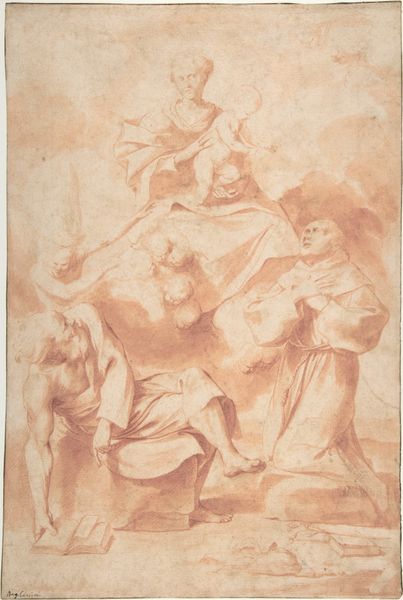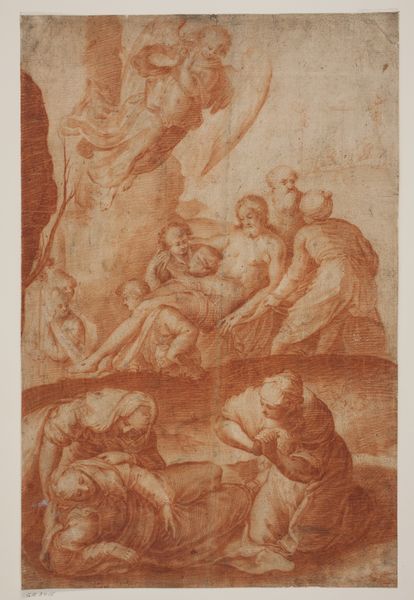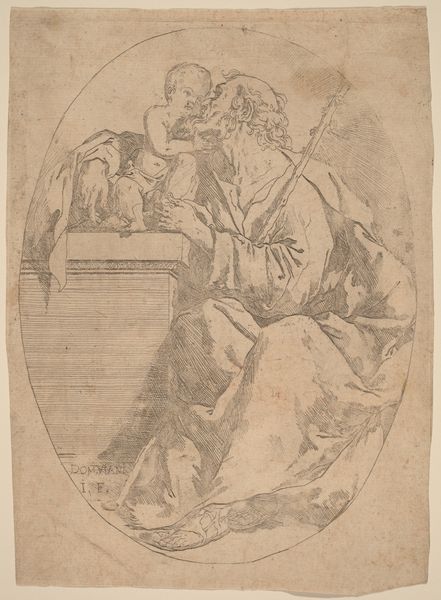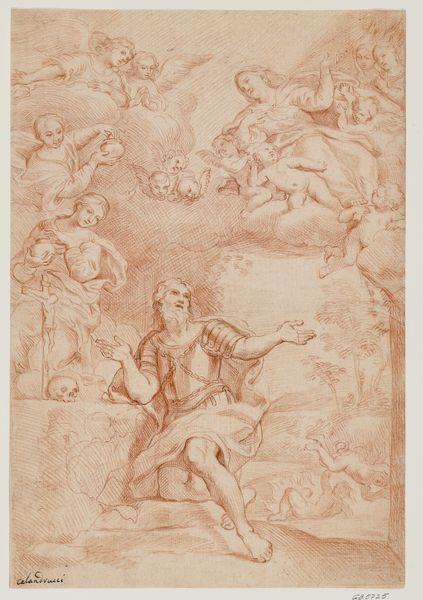
drawing, print, paper, chalk
#
drawing
# print
#
charcoal drawing
#
figuration
#
paper
#
chalk
#
history-painting
#
academic-art
Dimensions: 420 × 352 mm
Copyright: Public Domain
Curator: Let's take a moment to consider this drawing attributed to Agostino Carracci, simply titled "Saint Jerome". Editor: The color first strikes me – a sanguine wash that gives the entire scene a kind of blood-red vitality. It's also intriguing how the material qualities of the chalk give his muscles a certain...tension. Curator: Indeed. Carracci and his family played a significant role in the development of the academic style during the late 16th century, a movement centered on drawing and the perfection of the human form in relation to history and meaning. "Saint Jerome" demonstrates Carracci's careful study of anatomy. But not just to study. This piece shows its utility. It was practice. It feels as if the body, as labor, is shown as being used, but is also there as practice of material to be improved upon and perhaps resold later on. Editor: Absolutely, and that materiality extends beyond the body. It's interesting that he has this...relationship to a lion. Its musculature is interesting in combination with the muscles of Jerome. It’s almost as if both man and beast are cut from the same stone here. It begs the question: what does it *mean* for the labor that produced those human muscles? I can't imagine that there’s enough detail on these muscles to simply allow someone to work their land, let alone for themselves. What type of relationship is it in combination with the labor implied here that ties all these men together? Curator: The lion, of course, is Saint Jerome's traditional attribute, linking him to a popular, apocryphal story where he removed a thorn from the animal’s paw. Carracci employs traditional iconography, solidifying the saint's representation in a time of immense political shifts happening due to the Reformations occurring across the Holy Roman Empire. But Carracci isn’t just representing religious iconography. The artist must study for the piece’s public image within and for social power, so the piece might gain influence for its patron in wider circles, as its style, subject, and image might impress wider and wider circles. The more famous or powerful a patron is the easier and easier access artists could receive toward material, influence, power, reputation, or all of the above. Editor: It’s intriguing to think about how even religious or historical subjects get entangled in cycles of patronage. Art’s often a transactional labor, isn't it? Curator: Exactly! And even now, consider that “Saint Jerome” resides here at the Art Institute of Chicago. Its presence impacts the historical perception of academic study, of artistic tradition, and also of Saint Jerome’s role in the public imagination. Editor: Well, it definitely offers a unique perspective on the labor behind iconic images, prompting reflections on skill and craft. Curator: Agreed.
Comments
No comments
Be the first to comment and join the conversation on the ultimate creative platform.

